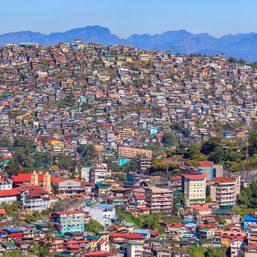SUMMARY
This is AI generated summarization, which may have errors. For context, always refer to the full article.
![[Rappler’s Best] A much-needed rehab](https://www.rappler.com/tachyon/2023/03/naia-terminal-1-passengers-holy-week-2023-scaled.jpg)
It’s finally happening: the rehab we’ve all been waiting for.
On Friday, February 16, the government formally announced that the San Miguel-led consortium, which outbid other big shots, has won the lucrative contract to rehabilitate the airport that’s caused us shame and pain, the Ninoy Aquino International Airport (NAIA).
Remember New Year’s Day of 2023 when air traffic froze at NAIA? The “technical issues” caused the cancellation, rerouting, and delay of the flights of at least 65,000 passengers. It would be Transportation Secretary Jaime Bautista’s worst nightmare, a crisis that pushed him and everyone concerned to move ahead with the ambitious P170.6-billion project to privatize and rehabilitate the country’s flagship airport.
According to Rappler business reporter Lance Spencer Yu, Bautista’s timeline was shorter than previous attempts to let the private sector take over. He could not afford to prolong the agony. Barely three months after the New Year fiasco, on Labor Day, lights went off at NAIA, causing misery to nearly 10,000 stranded passengers. And then a month later, just as privatization talks ramped up, another power outage hit NAIA Terminal 3.
The first half of 2023 thus saw Bautista’s department getting grilled by lawmakers from the Senate and the House about the airport catastrophes. Senators even went to NAIA themselves and discovered – surprise! – that air traffic equipment have not had proper maintenance. Read the highlights of the probes here.
Rappler Thought Leader Val A. Villanueva took the previous Duterte government to task for underspending on NAIA. He wrote: “Why NAIA was left to rot by the previous airport administration is beyond me. The airport is practically in need of a life-support system.”
So what does the new deal with the San Miguel-led consortium, which includes South Korea’s Incheon International Airport Corporation, entail?
- The group will make an upfront payment of P30 billion (about $536 million) to the government.
- It will now be operating NAIA for a period of 15 years, which it is required to “rehabilitate, operate, optimize, and maintain.” For this period, it will pay the government an annual fixed cost of P2 billion (about $3.5 million). The deal includes a possible 10-year extension of the contract.
- The obligation includes improvements in NAIA’s four terminals, its runways, and other facilities.
- The consortium will be sharing 82.16% (the highest offer among the bidders) of its revenue with the government.
What to expect after this? Here’s a general breakdown. And here’s what the rehab project will cover.
Too good to be true? Well, probably not when the Philippines’ richest is supporting the project. Val said in this piece that BDO chairperson Teresita Tan Sy-Coson has committed to “bankroll the cost” of rehabilitating NAIA.
Still, it’s a long road ahead.
Experts said the country’s airport population calls for a “two-airport strategy.” Not that this is far-fetched. San Miguel already has its planned Bulacan airport complex (yes, the same company that bagged the NAIA contract). South of Manila, in Cavite, the local government has awarded the contract to develop Sangley Point into an international airport to a consortium that includes the Yuchengcos, the Tans, and the Viratas.
And it’s not all air. The transportation department is gung-ho on two other infrastructure projects in Mindanao.
- No China? No problem. Secretary Bautista said his department will push through with the Mindanao Railway Project, something that the previous Duterte administration boasted it would finish on the bank of China’s (failed) promise to finance it.
- Davao’s EDSA. Estimated to cost P74.3 billion ($13 million), the Davao Public Transport Modernization Project is touted as a “game-changing project” by President Ferdinand Marcos Jr.
Not to burst your bubble, but expect a lot of noise and heat and trouble in these projects in the coming months. As Rappler business reporter Ralf Rivas wrote in 2020, when the Duterte government announced it intended to recover from the pandemic by building roads and bridges: “Infrastructure projects spark economic activity. They also tend to attract thieves.” – Rappler.com
Rappler’s Best is a weekly newsletter of our top picks delivered straight to your inbox every Monday.
To subscribe, visit rappler.com/profile and click the Newsletters tab. You need a Rappler account and you must log in to manage your newsletter subscriptions.
Add a comment
How does this make you feel?


![[Under 3 Minutes] When will we see modern jeepneys on the road?](https://www.rappler.com/tachyon/2024/04/francisco-motors-modern-jeepney-prototype-1.jpg?resize=257%2C257&crop=590px%2C0px%2C1012px%2C1012px)







There are no comments yet. Add your comment to start the conversation.